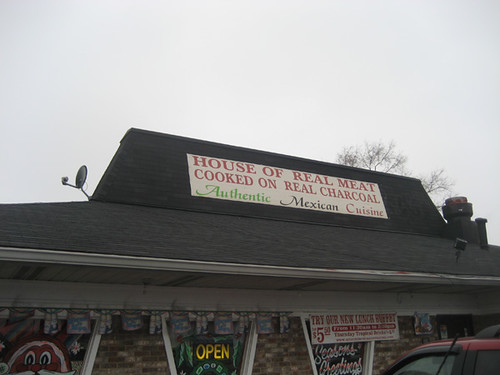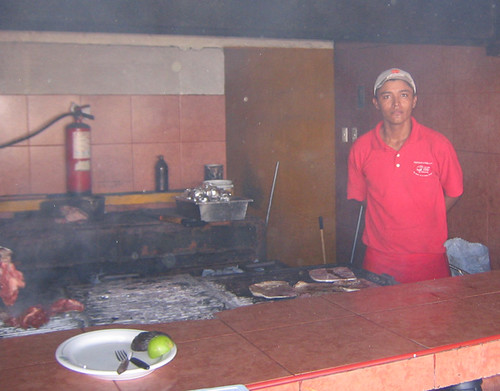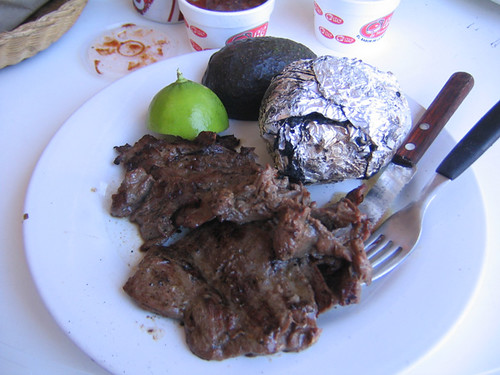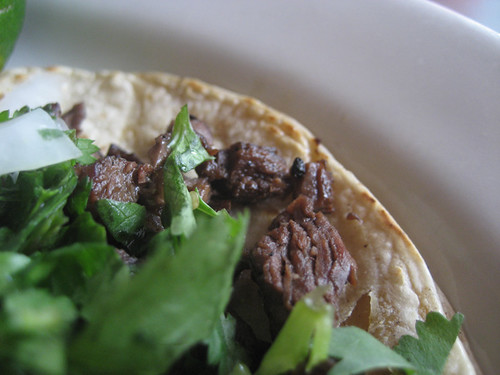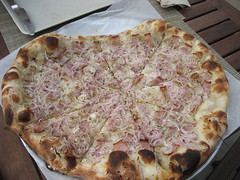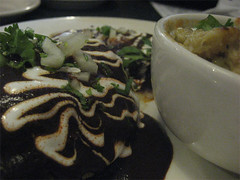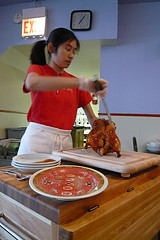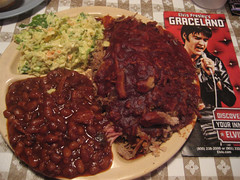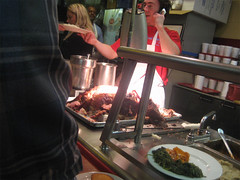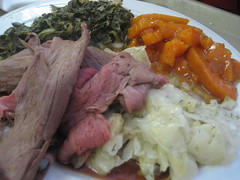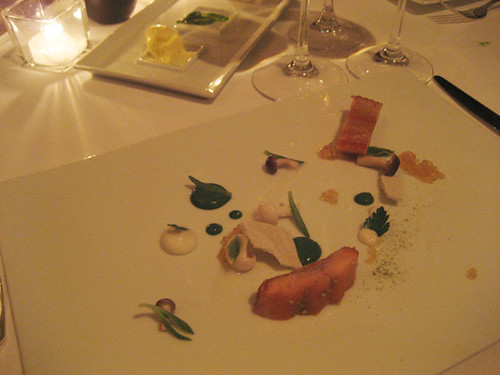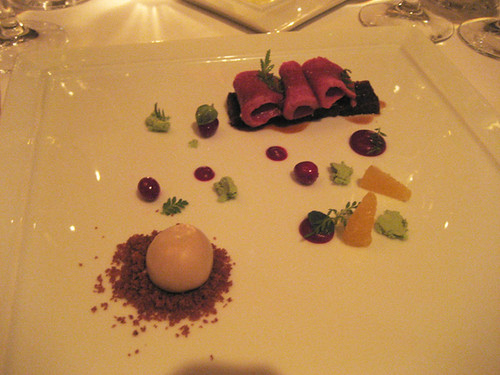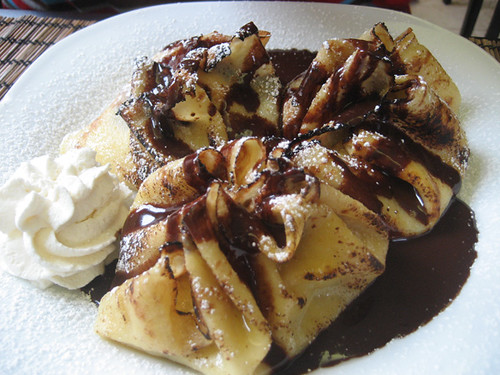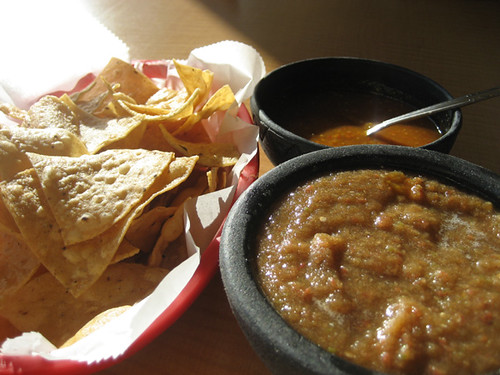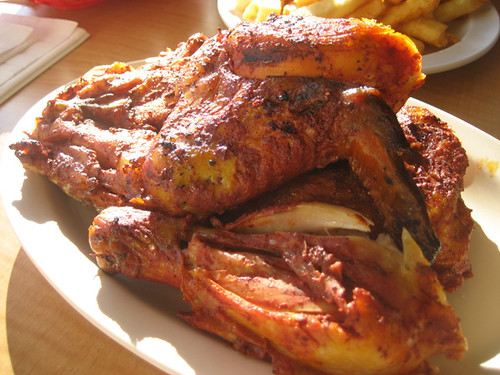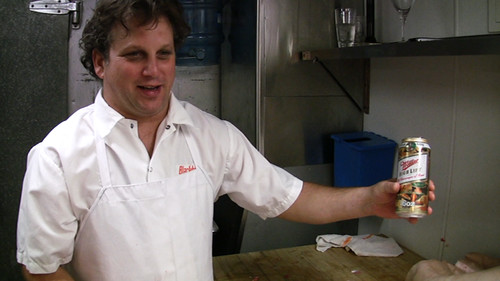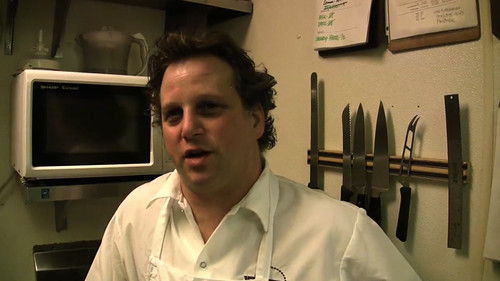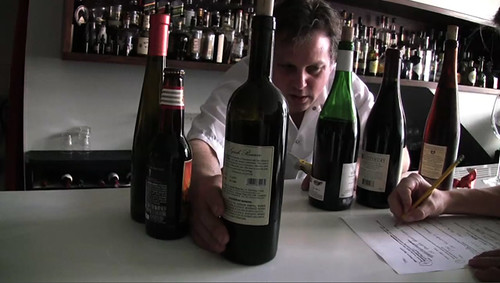
It sometimes seems as if there are no more food discoveries to be made in Chicago. The truth is, while it may be harder these days— though far from impossible— to find unknown places in Chicago, there are all kinds of unexplored suburbs around the city, especially in less-traveled-by-internet-users areas like the south suburbs. So don’t think it improbable if I say that as far as I am concerned, the best middle eastern food in Chicago is in an area that has gone almost entirely undiscovered (with one exception) until now— that at least half the times I’ve stopped for food there, I’ve had middle eastern food that for brightness of flavor, freshness of preparation, and the hospitality with which it was served handily surpassed almost any middle-eastern meal I’ve ever had within the city. After repeated middling experiences at what I’d long considered the best of them in the city— Salam— and adjusting my expectations for middle-eastern downward, the food in and around Bridgeview has given me new hope for the existence of an authentic, lively example of this cuisine in Chicago. I chronicled these explorations and discoveries in my Time Out “Taste Quest” last week; this will offer some notes and further explication of that piece, which I would recommend as the primary, easily referenced primer for the explorer.
I had vaguely known for some time that there were middle eastern restaurants down in this area (which, to help set the scene, is located straight south of the city on Harlem avenue in the 80s and 90s, mostly; or in foodie terms, it’s about a mile southwest of Chuck’s). In fact Salam even had an outpost here at one time. The Arab community here— mainly Palestinian— originated in Chicago’s oldest middle eastern area, which was in the South Loop, and for many years they were the shopkeepers for the south side black community, both necessary and resented by the local population (a la Korean bodega owners in black neighborhoods today). The community moved over time to the area around 63rd and Pulaski, and there are still some remnants of it there; I took part in an event during the time between the abandonment of Chowhound and the launch of LTHForum in which several of us ate our way up and down 63rd, checking out the restaurants and shops that existed then. However, when the best known to us of these, Steve’s Shish Kabob, closed up around 2006 (eventually reopening somewhat to the southeast of Bridgeview), the whole south side Arab community kind of fell off the local foodie radar.
To get back to its history rather than mine, the community had started looking for a place to build a mosque as early as the 1950s, and a Bridgeview mosque was built in the 1970s. The Bridgeview mosque has inspired controversy which is best understood by perusing the Chicago Tribune’s series of articles on it from a few years ago, but whatever may be happening inside it, the commercial activity around it remains warmly welcoming to the outsider, if to judge by appearances, rarely seeing many from the Irish, Poles and Lithuanians who also live in the area.
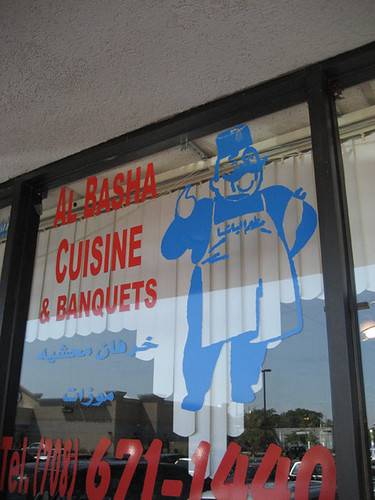
The first place I visited, a bit to the south of the main area, was Al-Basha in Palos Heights, which seems to have been around for a number of years, to judge by both the slightly worn decor and the very relaxed air with which regulars were being served. First impressions were not promising— and it took long enough to get our order taken that they had a long time to sink in— but all doubts were swept away once food arrived. Everything— falafel, kifta, the bowl of complimentary pickles— just sparkled a little brighter than any I’d had locally for some time. Tastebuds that had been lulled into slumber woke up, ready for duty. The food was as jaunty as the chef in the window:

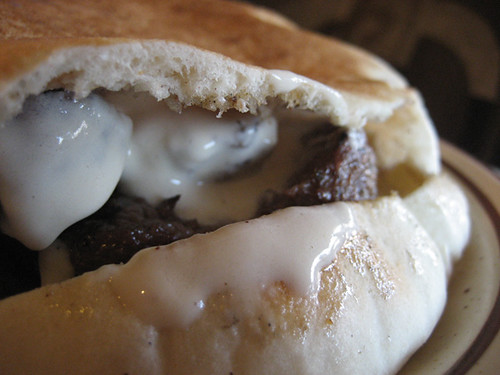
Al Basha
7216 W. College Rd.
Palos Heights
708-671-1440
A month or so later my wife and I were in that area again and I suggested we just pick and try another random unknown spot. She’s the one who found Albawadi Mediterranean Grill in a strip mall parking lot on 87th. If I had one knock against Al-Basha— besides the fact that smoking is still allowed in restaurants in Palos Heights, shock, horror!— it would be that the menu seemed to offer only the expected standards of middle eastern cuisine. Albawadi proved not only to be at least Al-Basha’s equal in flavor but to show more ambition with an extensive menu that includes everything from meat to seafood, and begins with a relish tray centered around a wonderful garlicky eggplant dip (something like the Turkish imam biyaldi). The grilled meats were outstanding, perfectly done, while the decor led to a rather amusing moment:
Al Bawadi is located in a former fast food building, which they are in the process of expanding so that they can have a nonsmoking original building and a separate hookah room. The building looked vaguely Alamo-like, but I couldn’t quite place it, so after our meal I asked our waiter if it had been a Mexican restaurant. He clearly thought I was asking if the meal we had eaten was Mexican food, and, eyes bulging in disbelief and dismay, carefully explained to the astonishingly stupid gringo (who somehow knew baba ghanoush and falafel by name, but apparently believed them to be salsa and chips), that the restaurant was Jordanian-Palestinian. Eventually I got out of him that the building had once been an Arby’s, but I’m not sure I ever convinced him that I hadn’t mistaken his place for Senor Sombrero’s.
Albawadi Grill
7216 W 87th Street
Bridgeview, IL 60455
708-599-1999
At this point, 2 for 2 on random picks having turned out to be pretty damn wonderful, I decided I had a mission to try every middle eastern place down here. As it turned out, Albawadi turned out to be the best by a comfortable margin, and indeed I would anoint it the best middle eastern restaurant in Chicagoland— and thus the one to visit if you feel inclined to make a trip down there and check the area out. And since the menus tend to be fairly similar from place to place, that’s not a bad strategy. All the same, there are several other worthy places worth noting, and without duplicating the Time Out article (which extends to groceries and sweet shops), here are a few more restaurants which warrant attention (and which I will number as part of my series of 50 places previously undiscovered by LTHForum and the local foodie community generally):

21. The Nile
This is a second outpost of a restaurant that still exists on the 63rd street strip (the similar-named place in Hyde Park may have been related once as well; or “The Nile” for a middle-eastern place may be “Great Wall” for Chinese restaurants). The cafeteria-like atmosphere is nothing to get excited about, but the bustle behind the counter suggests that they’re doing more than lazily serving up falafel— mensef was the special one day I came in here. (The specials board is in Arabic, so you have to ask.) I didn’t have the mensef, I wanted to just try the regular menu (and being on deadline, I had another lunch ahead of me that day, so I didn’t want to order big), but the shish taouk was grilled spot-on perfect and the falafel were bright and flavorful. It’d be worth checking out again.
The Nile Restaurant
7333 W 87th St
Bridgeview, IL 60455
(708) 237-0767
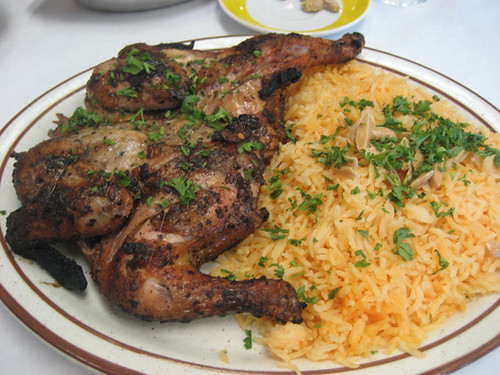
22. Baladi Restaurant
This was one I found by searching the internet, as it’d be easy to miss it on a side street off Harlem. (I don’t have much use for Yelp generally, but it sometimes at least alerts you to the existence of places that locals have commented on that otherwise have gone unnoticed by the internet.) The first time I went I had an absolutely fantastic grilled chicken off the specials board (again, in Arabic only), perfectly grilled (do we detect a theme?) and accompanied by a kind of red pepper sauce. I had planned on a second lunch that day as well but the idea of not finishing that chicken while it was warm and crispy was unacceptable. Baba ghanoush— not that I needed anything like that with this chicken— also impressed me as smoky and delectable.
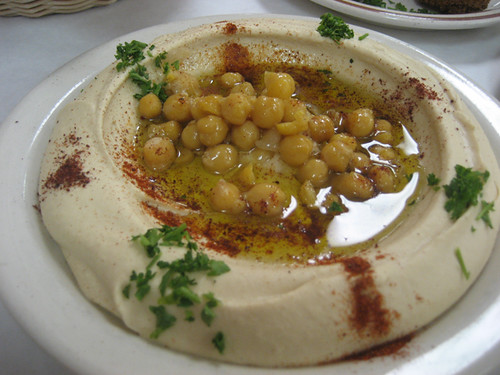
I returned about a week later with LTHForum poster Gastro Gnome, who had agreed to accompany me to visit some of the groceries and markets and help me understand where the points of distinction were so I could include a few of those in the Time Out piece. We started with lunch at Baladi, ordering off the regular menu, and… it was one of those times when the second visit completely fails to show your guest what had wowed you the first time. Everything (shawerma, shish taouk, etc.) was okay, but nothing sparkled. So I guess stick to the specials at Baladi; that chicken really was great. I’m not imagining it.
Baladi Restaurant
7209 W 84th St
Bridgeview, IL 60455
708-233-1025
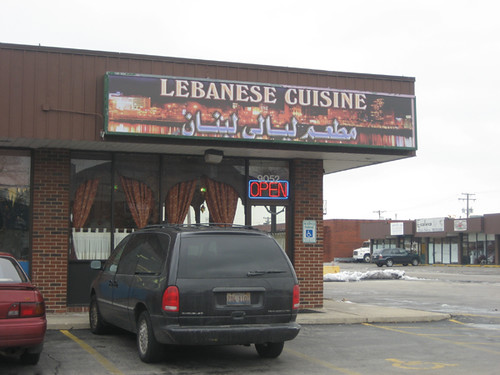
23. Lebanese Cuisine (menu says Lebanese Nights)
This is the only Bridgeview restaurant I tried that didn’t make the Time Out piece at all. (Al-Basha didn’t make it because it was too far away from the others.) The location is actually where Salam’s outpost used to be, and it was something else in between (as my take-out bag indicated). I ordered a Lebanese shawerma sandwich (shawerma inside a thin wrap with pickles and so on) and a side of foul, beans. Running the place (seemingly singlehanded) was a sort of pepperpot lady in a full hijab. She couldn’t have been more warm or welcoming, and I was ready to love this place… but the food just didn’t do it at all. The shawerma was kind of mealy and tough, and the foul, despite giving off waves of garlic, was flavorless in that way that only bean dishes can be. Too bad.
Lebanese Nights
9050 S Harlem Ave
Bridgeview, IL 60455
(708) 430-4377
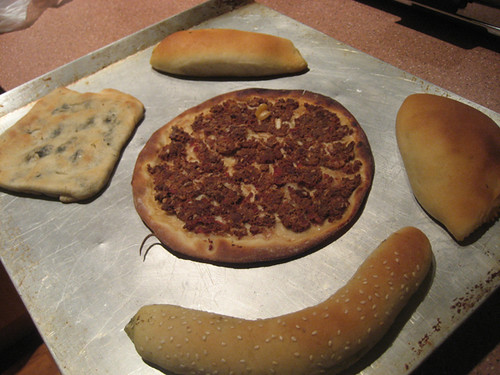
24. Village Pita & Bakery
This small shop would have been easy to miss in the same strip mall as Albawadi, but I’m glad I didn’t. They sell a variety of baked goods stuffed or topped with things like za’atar (a green spice of herbs and sesame) or mohamara (a spicy red pepper topping), dirt cheap and, if not mindblowing, totally easy to like. Not surprisingly, it was the one place where I saw non-Arab customers— the Irish kid delivering Pepsi chimed in to urge me to try the potato filled one. The owner (you can see his picture at Time Out’s site) clearly takes serious pride in his wares, as he was very insistent, almost worriedly so, that I not under any circumstances microwave the ones I took away (hey, I’d already had two lunches), but warm them on a cookie sheet in the oven. I did, they made a great dinner that night.
Village Pita & Bakery
7378 W 87th St
Bridgeview, IL 60455
(708) 237-0020
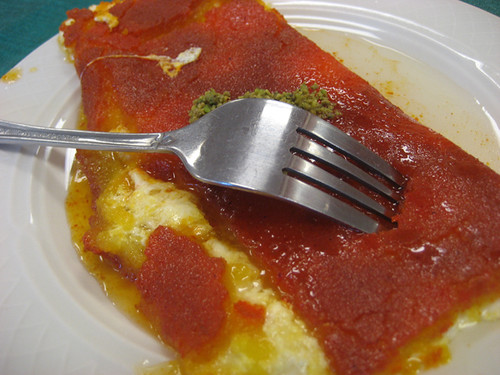
25. Nablus Sweets
I tend to think of things like baklava in terms of David Mamet’s line that there’s no difference between good flan and bad flan, so I included a couple of sweets shops in the piece, but hell if I have any way to tell which is better than the other. This place stood out for one offering I’ve never seen anywhere else— knafeh, a dish made of warmed white Nablus cheese, topped with orange shredded wheat (once saffron-colored, I imagine), ground pistachios and sweet syrup. I could only get through half a piece, it was so rich and sweet, but I was assured on the weekends, they line up for it.
Nablus Sweets
8320 S. Harlem
Bridegview, IL
(708) 529-3911
Tags:
bridgeview,
grilled,
hummus,
knafeh,
lebanese,
middle eastern,
palestinian,
south suburbs


 Posted in
Posted in 










